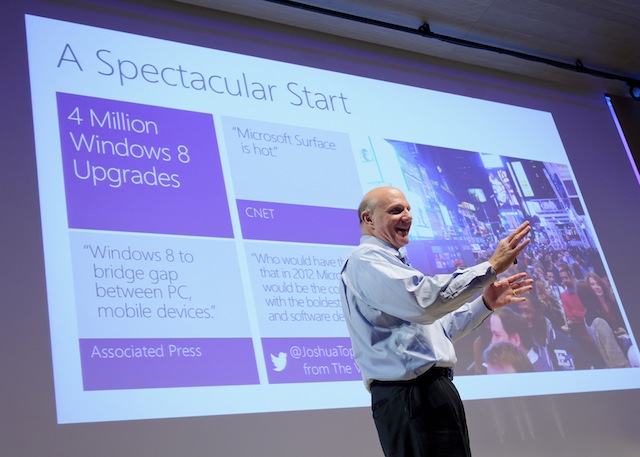Killing a technology product is never a clean process, as Google well know. Microsoft show the way to deal with a failed project and we’re seeing their five stages of abandoning a product as they prepare to retire Windows 8.
The stages of Microsoft are abandoning a product are well known – the failure of Microsoft Vista is the best example, but not the only one.
As Microsoft smooths Window 8’s pillow and prepares for its imminent demise we can see the process at work.
Denial
At first the company denies there is a problem, the flashy advertising campaigns are boosted and the various ‘in the camp’ commentators get informal briefings from company evangelists to fuel their snarky columns about people getting Microsoft’s latest product all wrong.
This usually goes on for around six months until the market feedback that the product is dog becomes overwhelming – usually this happens at the same time the first reliable sales figures start appearing.
Anger
As the consensus in the broader community becomes settled that the new product isn’t good, the company’s tame commentators turn nasty and lash out at the critics for ‘misrepresenting’ the new product.
This is usually a touchy period for Microsoft and other vendors as they can’t risk being too aggressive but they have to allow their allies to both let off steam and try to recover the credibility they lost in hyping what’s clearly been a market failure.
Bargaining
Once it’s clear the perceived wisdom that the product isn’t very good isn’t going to be shaken, the vendor comes out with special offers and pricing changes to try and coax users over to the new service.
With Windows 8 Microsoft tried something unusual, rather than cutting prices, Microsoft announced they would increase the cost of Windows 8.
The idea was probably to panic people into buying the product and giving Microsoft a revenue and market share bounce for the quarter.
It didn’t work – the consensus that Windows 7 is a better product meant people stayed away.
Depression
As the realisation that pricing tweaks and promotional stunts won’t work sends the company, and its supporters, into a funk.
For experienced industry watchers, the silence around a product that’s been heavily hyped and defended for the previous year or two is a good indication that the next version is being accelerated.
Acceptance
Eventually the vendor accepts the product has failed and starts working on its own exit strategy – hopefully one that doesn’t see too many executives sacked.
With Microsoft’s this process starts with a quiet announcement that the replacement version of Windows is on the way, in this case Windows Blue.
At the same time, the tame commentators start talking about ‘leaks’ of the wonderful new system that is in the pipeline. Early beta versions of the new product start popping up in developers’ forums and file sharing sites.
Eventually you get stories like this one that appeared in The Verge yesterday – Windows Blue leaks online and we can be sure the Microsoft public relations machine has subtly moved onto the next version.
Vale Windows 8
So Windows 8 is coming to an early end. In one way this is a shame as it was a brave gamble by Steve Ballmer and his team to solve the ‘three screen’ problem.
Computer users today are using three or more screens or devices – a desktop, a smartphone and a TV or tablet computer.
Microsoft were hoping they could develop a system that unified all these platforms and gave users a common experience regardless of what they were using.
It appears to have failed, probably because the different devices don’t have the same user experience so a keyboard based system doesn’t work on a touchscreen while a touch based system sucks really badly on a desktop or laptop computer – which is Windows 8’s real problem.
Unrealistic expectations
Another problem for Microsoft were the unrealistic expectations that Window 8 would halt the slide of personal computer sales.
PC manufacturers have been baffled by the rise of smartphones and tablet computers – vendors like Dell, HP and Acer have miserably in moving into the new product lines and they hoped that Microsoft could help arrest their market declines.
This was asking too much of Windows 8 and was never really likely.
So the cycle begins again with Windows Blue, the question is whether it will be the last version of Windows as we move further in the post-PC era.

Leave a Reply